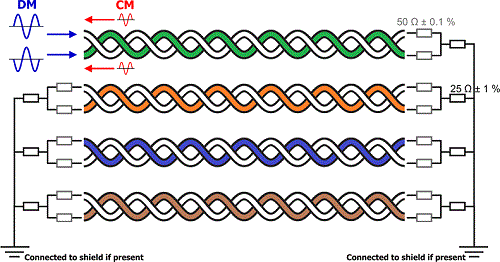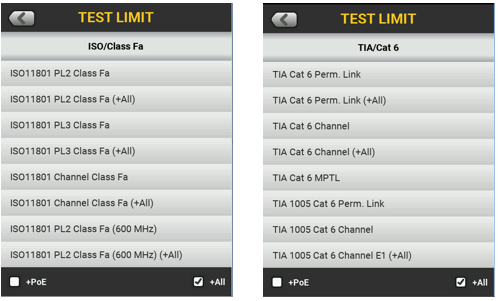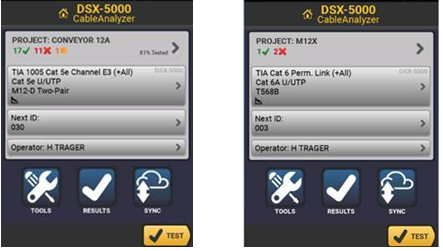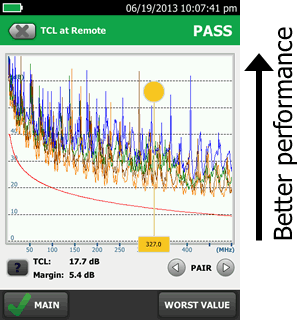TCL (Transverse Conversion Loss) - DSX CableAnalyzer
TCL is one of two balance measurements found in ANSI/TIA-568.2-D, ANSI/TIA-1005 and ISO/IEC 11801 Edition 2.2 2011-06. The other is ELTCTL.
The measurement is made by injecting a differential mode signal (DM) into a twisted pair, then measuring the common mode signal (CM) returned on that same twisted pair. The smaller the CM signal returned, the better the TCL measurement (balance).

If it looks similar to a Return Loss measurement, you're right. Except a Return Loss measurement is made by injecting a DM signal into the pair and measuring the DM signal returned. Here we are measuring the CM signal returned which is TCL.
Field test requirements for ANSI/TIA-568.2-D are deferred to ANSI/TIA-1152. TCL is especially important for UTP cables in industrial premises as described by TIA-1005A and ISO 11801:3 for E1, E2 and E3 zones. E3 zones are generally near EMI emitting devices (VFDs, for example) and related wiring, and E1 is a data or control room environment. E2 is factory environment between zones E3 and E1. Field testers are normally capable of DM measurements only - the DSX CableAnalyzer is capable of both DM and CM measurements, hence its ability to measure TCL and ELTCTL.
If you wish to add ELTCTL and TCL to your standard Category 5e, 6, 6A or Class D, E or EA test, select your ISO or TIA folder in DSX and look for a test limit with a suffix of (+All):


This will add ≈ 6.6 seconds to your AUTOTEST time.
The suffix of (+All) indicates a standard ANSI/TIA or ISO/IEC test with the addition of ELTCTL, TCL, Resistance Unbalance within a pair, Resistance Unbalance between pairs, CMRL and CDNEXT measurements.
In the example below from a DSX-5000 CableAnalyzer, a Category 6A Channel was tested. With a margin of 5.4 dB (6 dB is a factor of 2), you can feel confident that this link will perform well, even in a noisy environment.

Why is balance important?
Ethernet transmits a balanced signal. The idea is that any noise injected into the cable is cancelled out, assuming the link has good balance. It also indicates how much signal the link emits.

If the link has poor balance, the noise injected into the cable becomes part of the signal. The imbalance in the link causes the injected voltage on the pairs to be unequal.

This has the potential of creating errors on the network, resulting in re-transmission of signals and slower network performance. This can be particularly problematic in Industrial Ethernet applications where latency is critical. In a data center where it is also particularly noisy and where transaction times are measured in mS, re-transmitting a signal could result in a delayed transaction.







